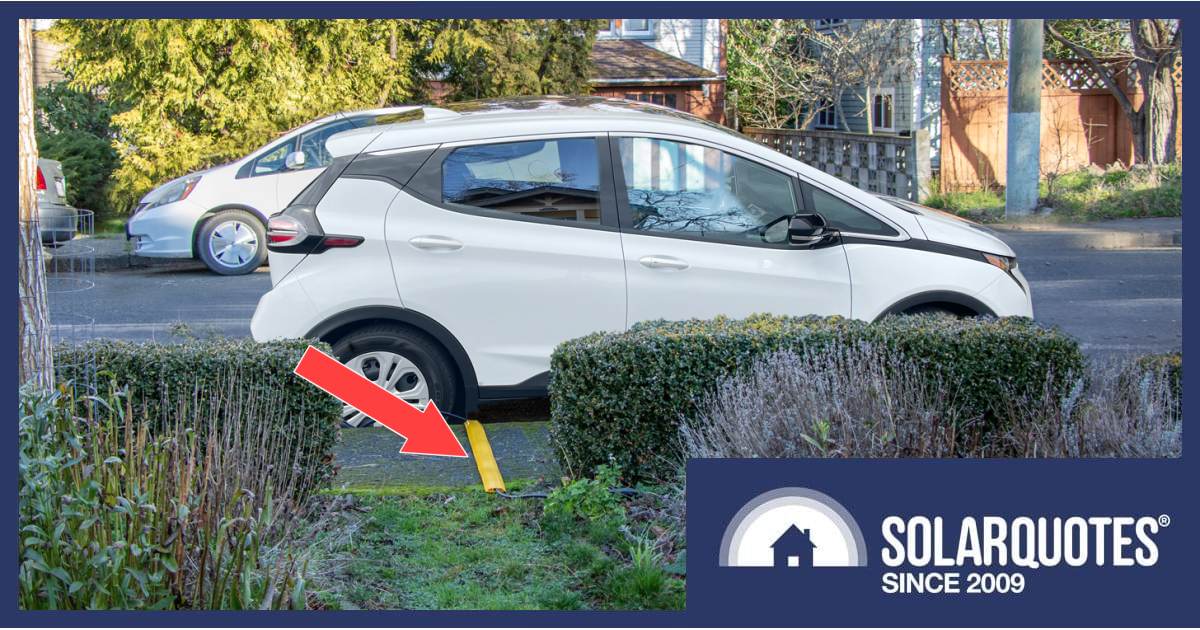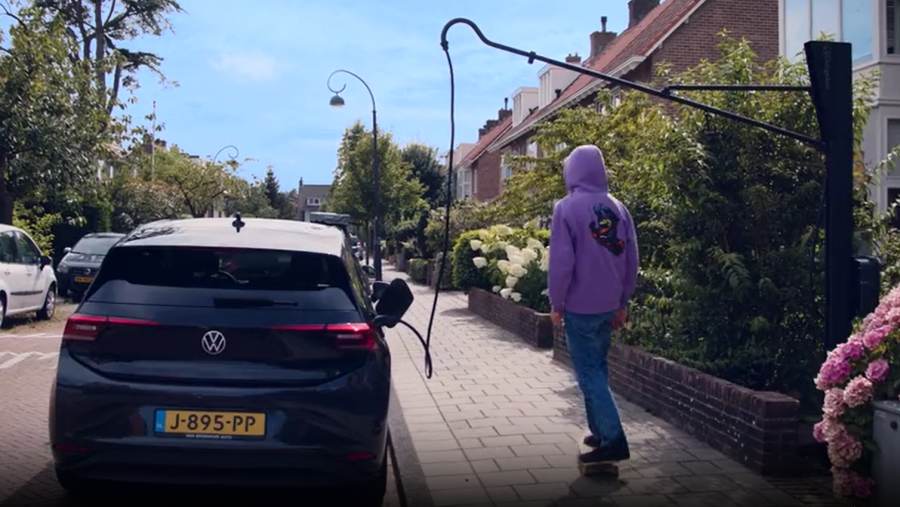The City of Victoria in Canada is undertaking a trial allowing EV owners to run charging cables across footpaths; a practice that is forbidden in many places, including here in Australia.
Home EV charging is pretty easy in our household. We park the Atto 3 in our garage or driveway, connect the Fronius Wattpilot and off we go. But not everyone has it so good.
Canada’s city of Victoria is the capital of British Columbia and is located at the southern end of Vancouver Island. The region has the highest percentage of EV sales in the country and Victoria’s local government has set its sights of having EVs represent 30% of vehicles in circulation by 2030.
Some of the actions to support uptake include a requirement that every parking spot needed for new homes, apartments and condos must have a powered outlet capable of Level 2 EV charging as defined by Society of Automotive Engineers (SAE) International’s J1772 standard1. For new commercial developments, five percent of the parking spaces are required to have an outlet for EV charging.
But what about EV owners who don’t have off-street parking at home?
At the beginning of this year, the City of Victoria launched a pilot program to allow those with the appropriate permit to charge their EV through running a cable across the footpath. The permit needed for the program, which runs until December 31 2025, costs CAD $10; which is about $11 Australian.
There are a few rules involved, among them:
- Those wanting a permit need to be able to provide evidence of car and home/renters insurance.
- Charging cables must run perpendicular to the footpath and be protected with a yellow rubber cord cover meeting licence agreement requirements.
- Charging is only allowed between 8 PM and 8 AM – perhaps inconvenient, but better than nothing. Outside these times cords and covers must be removed.
- Only Level 1 (aka “granny” or “brick”) chargers can be used.
“The Electric Vehicle Street Charging program will help keep sidewalks safe while also supporting the transition to EVs,” says the City.
Depending on how this pilot goes, it may be extended.
Cables, Even With Covers, Are A Trip Hazard
It will be interesting to see the results of this pilot and if any related pedestrian injury lawsuits are filed during it; or other mishaps.
Even with cable covers being used, SQ contributor Kim mentioned in a post on kerbside charging last year:
“Any deviation to the height of the thoroughfare surface would still be a trip hazard for the visually impaired and challenging to navigate for prams and the like.”
Added to that are those who may have general mobility issues, such as the elderly.
Kim also highlighted a few other creative approaches some Australian EV owners have taken that are also unsafe and/or may get unwanted attention from councils.
Safe, Affordable Solutions Needed
There are some initiatives seeking to address kerbside charging issues in Australia. For example, the Albanese Government announced earlier this month it was providing $2.4 million in funding for the installation of 250 public kerbside electric vehicle charging stations in New South Wales, Victoria and South Australia. That’s great, but it likely won’t touch the sides of demand even in those states.
Another potential solution we’ve very briefly touched on before is ChargeArm, which can be used with Level 2 chargers.
According to its inventors, the design ensures the charging cable is well-protected and the footpath free from obstacles. The gas lift provides smooth movement, and strain reliefs prevent damage to the cable; which is also protected when not in use as it folds up within the device’s housing.
If someone should pull on the ChargeArm when extended, the gas lift only allows slow downwards movement, and on release it will slowly rise again. It may also deter some cable thieves after copper, as only a portion of the cable protrudes from the ChargeArm. As for the electrical safety aspect, all metal parts are earthed.
“This ensures that if a part of the ChargeArm comes under power, the circuit breaker in the meter box will immediately switches off the power.”
The minimum cable length is 7.5m and the maximum is 10m.
Note that the image above doesn’t show an ideal installation as part of the cable encroaches on the footpath. Verges in Australia may also present an issue in some areas. For example, the device’s arm can be extended to a maximum 2.45m and the distance from our property line to the gutter edge is well over 3 metres.
Manufactured in the Netherlands, it’s an interesting solution. I don’t think this product is available in Australia yet or know its cost; or how councils might view it.
Footnotes
- Maximum power of 5.0–19.2 kilowatts (kW) – which I thought would require a hard-wired charger, not an outlet. ↩



 RSS - Posts
RSS - Posts



During a walk I managed to trip and fall on my elbow and forehead due to a gap in the concrete slabs on the footpath. Council refuses compensation as they are legally not liable unless they are given a prior warning of a step hazard.
Why not allow 90mm conduit under the footpath to run charging cables. Pull the cables pack onto the property when not charging.
Hi Lloyd,
There are some nanny state rules that need addressing but this has already been done by a few.
Personally I like the bloke who uses a fishing rod to support his cable.
Who pays the public liability insurance